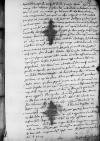Cum ⌊germanus tuus⌋[1] ex ⌊Vilna⌋ rediens quasdam litteras mihi obtulit et declaravit se ad Te iturum[2], non potui me continere, quin litteras meas illi ad Te darem ob veterem inter nos consuetudinem, quae apud me adhuc integra est, et ut in occidente, quae pars Tibi sorte cessit[3], ut mihi septemtrio, intelligeres, quid rerum apud nos agatur. De ⌊Moscis⌋[4], ⌊Tartari⌋s[5], ⌊Prutenis⌋[6] et ⌊Livoniensibus⌋ ex aliis plus quam ex me habere poteris, quamvis et ego nunc regnante ⌊Ferdinando⌋ in Germaniis orientalibus[7] denuo ⌊Moscoviam⌋ sum ingressus[8] hoc idem, quod tempore ⌊Maximiliani imperatoris⌋ tractans[9]. Demum et ⌊Petercoviae⌋ anno praeterito[10], hoc vero ⌊Vilnae⌋ ⌊regem Sarmatiae⌋[11], dominum Tuum adivi[12] et nunc ⌊Craccoviae⌋ sum[13], medio domini ⌊Christophori de Schidowetz⌋ etc. castellani Cracoviensis etc. negotia ⌊serenissimi regis mei⌋ ago[14], multa in dies audio. Cum tamen tanta Tibi copia amicorum in his partibus, qui Te nihil celant, superfluum mihi visum plura de eisdem describere, nisi cum iam ⌊Suleymanus Turcarum rex⌋ cum ingenti apparatu bellico tendat contra ⌊serenissimum regem meum⌋ et eius ⌊regnum Hungariae⌋ et forte, si fortuna faveret, usque ⌊Austriam⌋ et ⌊Bohemiam⌋ progrederetur. Nunc tyrannum aiunt ad confluentem ⌊Savi⌋ venisse[15]. Audiuntur gaudia et tripudia per ⌊Craccoviam⌋ et ⌊Poloniam⌋, ac si Redemptor illis aut Iudeis Messias venisset, at dicant plures ex illis. Non omnes gaudent, at ego dico plures. Sunt, qui forte eventum praevident. Nescio tamen, quae furia populum cruciat et in odium ⌊Germanorum⌋[16] tam acriter impellit, ut ⌊serenissimum regem meum⌋, qui cum ⌊Germanis⌋, ⌊Bohemis⌋, ⌊Hungaris⌋ atque Slavis[17] imperet, Germanum dicunt et illum potius, quam ⌊Turcum⌋ perire expetunt. Non equidem de omnibus Polonis dico. Attamen et illis cum ceteris, si nobis flendum illis, non diu ridendum erit. Fiat voluntas illius, qui est in caelis[18]. Ioannes Sambocius[19] in hospitio meo Vilnae me praesente obiit. Dominus ⌊Nicolaus Nypschitz⌋ Tui amantissimus mirum in modum de illius obitu contristatus. Timeo, ne et illi ex tali dolore quid mali eveniat, et nisi Te expectaret, sine dubio pessime haberet. Inquit enim alium non habere, cui aliquando confidenter possit communicare. Omnes profecto magno desiderio Te expectant, quare redi et veni felix et prosper, ut aliquando te pontificem liceat intueri. Et bene vale meque, ut aliquando coepisti, ama.


 AAWO, AB, D. 3, f. 29v
AAWO, AB, D. 3, f. 29v